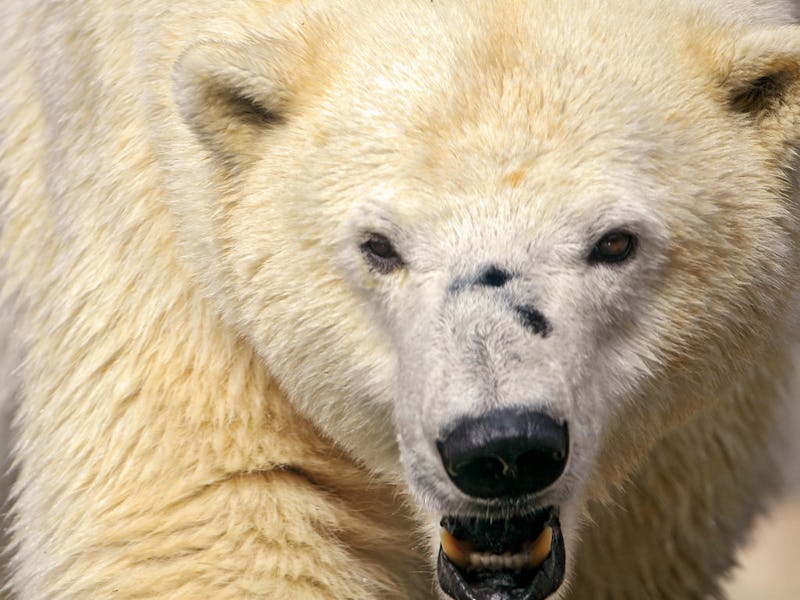Expect More Polar Bear Sieges, Thanks to Climate Change
They're going to be hungry. Really hungry.

Earlier this month, five Russian scientists found themselves in a horrifying predicament: a dozen polar bears encircling their camp, trapping them for weeks. The siege was bloody, with at least one dog lost to the bears. Fortunately, a nearby ship was ultimately able to send more dogs and flare guns, and the team was able to drive the terrifying predators away.
Despite the fact that polar bears are the poster children of climate change’s endangered species, all signs point to more conflict between humans and animals in the future.
Goodbye, sea ice
The primary reason climate change sucks for polar bears is that they depend on sea ice to hunt their favorite meal: seals. No ice means no seals, and it’s the reason that some research predicts catastrophic polar bear die-off as the Arctic melts away.
That, of course, assumes that the bears are just going to hang out on the beach waiting for the seals to jump onto shore. They won’t. For want of ice, the bears are sure to turn to land, where geese, eggs, and caribou might provide a tasty snack.
Land is also where humans tend to congregate, and more bears on land for longer times translates to increased chances of conflict. The polar bear wranglers in the northern Canadian town of Churchill are already feeling the pinch.
It’s worse still if you’re on an island, as the Russian scientists were. If the bears are stuck on a limited piece of land — without an ice bridge to seek happier hunting grounds — and food is scarce, they will be more likely to see human camps and settlements as their best chance at a snack.
It’s getting hot up there
The Arctic is warming twice as fast on average as the rest of the world. This melts ice, of course, but it also changes landscapes. That means creatures and vegetation will expand their ranges northward. More abundance of land gives polar bears all the more reason to pick turf over surf, and they may spend energy refining their goose hunting techniques rather than chasing elusive seal meat.
And, for all the reasons already mentioned, more polar bears on land means more conflict with humans.
More science, more tourism, more industry
The flipside of having more polar bears hanging out on land is that there will be more people there, too. As it stands, not a lot of people spend very much time hanging out in polar bear country. Churchill aside, very few communities have a persistent problem with the animals.
However, a warmer climate will almost certainly mean more humans heading north, and staying longer. Scientists will benefit from a longer research season, and presumably more of them will be interested in studying the rapidly changing Arctic world. Less sea ice will mean more open water for transportation and tourism; this year the Crystal Serenity carried 1,700 passengers and crew on a luxury cruise through the Northwest Passage for the first time, and more trips are planned in the future. Warmer weather is also good news for anyone who’s interested in exploiting the Arctic’s great mineral and fossil fuel resources; longer seasons and better transportation will drive costs down and make more projects economically viable.
Until now polar bears and humans have mostly managed to stay out of each other’s way, to the benefit of both, but mostly the bears. Humans don’t have the best track record when it comes to overlapping land claims with large mammals — when people move in, the largest animals tend to die out. Polar bears have gotten lucky in that, until recently, they’ve found a comfortable home in an ecosystem most humans tend to stay away from. And as terrifying as the idea of a polar bear attack is, it’s worth considering that the world will never reach a point where they hurt humans as much as we hurt them.